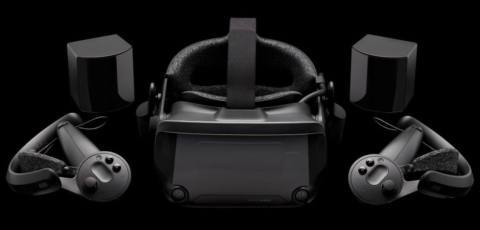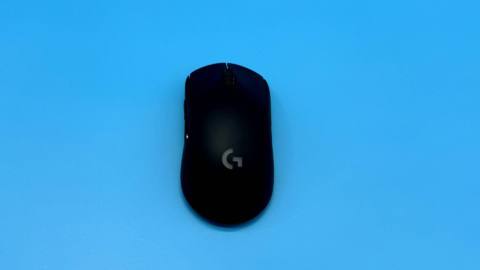Valve has very much done a Valve again. The Seattle-based videogame chocolate factory has never been one for the expected and has released its latest game, Deadlock, in an unprecedented fashion: by acting like it didn't exist even as it invited thousands of people to play it Now, its existence is official. But you still gots to be invited.
Deadlock first appeared on Steam on 28 April, 2024, and from May to June built slowly to have around 2,000 average concurrent players per day. At sometime in early August the number of players begins to explode, with the game peaking at 45,000 concurrent players on Sunday August 15. As I write there are 33,000 people playing Deadlock.
The numbers went up because Valve gave players the keys. Any Deadlock player can recommend others on their Steam friends list for access, and most seem to be let right in. At which point they can then recommend others. For all this is a game that's supposedly secret, and that its players weren't supposed to talk about until just over an hour ago, Deadlock's initial distribution method is word-of-mouth.
The genius element of this was the social side. By giving players the ability to invite other players, Valve made access its own little currency, complete with that omerta-like plea of silence. One of the richest companies in gaming has spent $0 and everyone interested in the scene has heard about this 'unreleased' game, seen the 'leaks', and many are banding together to get in. Hell the game has a subreddit.
Then, on a quiet Friday when everyone was winding down, Valve finally acknowledged the game existed, replaced the “don't talk” sign with one saying “all feedback welcome”, and gave the thing a Steam page where, of course, you can wishlist it.
I mean, well played. Deadlock would've inevitably attracted interest anyway, simply for being a Valve game, but now this genre mishmash is on any PC gamer's radar. I haven't had access yet, and I've ended up just watching a ton of Deadlock videos instead and there are so many: since March, multiple YouTube channels dedicated to the game have sprouted up, most with hours upon hours of footage. And Deadlock is an odd one, with perhaps the most important caveat being that this is clearly an unfinished game: and somehow a familiar one.

Oops! I Dota again…
Valve has had huge success with Dota 2, as has Riot with League of Legends, but even though both games remain massive the genre feels a little played-out. I don't think there'll ever be another MOBA on the scale of those two, and their real heirs will be new styles of game that take the most compelling and evergreen elements of their design, and use them differently. All of which is preamble to my suspicion that, one day, Valve had a meeting where someone blurted out “why don't we make Dota 3 a third-person shooter?”
It really do be like that. At times Deadlock hews so closely to the Dota aesthetics and mechanics that if you took certain 15-second clips and said it was a Dota 2 mod, people would believe you. That is far from the whole story, because Deadlock is a visual and mechanical mix that notices all sorts of shiny things from other games and, magpie-like, arranges then re-arranges them around the place.
Valve is not the first developer to have this idea: Crucible, Paragon, Battleborn, the list goes on. But for all Deadlock's issues, one quality it definitely has is speed. Even when you're looking for a game, queuing works by asking you to pick three heroes, and setting one as your preferred choice, after which Deadlock matchmakers you into a game with one of those characters. This avoids a draft phase and just seems like a good and unfussy improvement, and then (after a countdown) Deadlock gets you right into the match itself: You automatically begin on a zipline heading into the map at high speed.
The ziplines are fast, four different colours, and both get you right in and right out of the action. Each map has four lanes, with little minion armies battling across them, and each side has six heroes. The minions gradually amp-up in power, there are 'jungle' zones and mid-bosses to be tackled for extra XP or boosts, and the whole match is about battering through the opposing team's fortifications and taking out their Patron, a giant glowy orb-thing.
Overwrought
As it stands Deadlock has 20 heroes split roughly between tanks, supports, and assassin types. Each has four core abilities and across the roster you'll see straight lifts from Overwatch characters like Reaper, perhaps a little Valorant in some of the AoEs, and yes even some Team Fortress 2 DNA in there. McGinnis could be some distant relative of the Engineer, while my headcanon already has Pocket as the irritatingly efficient step-brother of Scout.
Matches see you pushing alongside your own minions, constantly shooting at the enemy minions, and taking the right opportunities to use your specials and engage enemy heroes. Deadlock's moment-to-moment movement is extremely fast and vertical, with every character effortlessly mantling the environments (while reloading, no less), and many having abilities that shoot them up high. The better players basically never stop shooting while hurtling themselves between lanes and positioning for that pick on an enemy hero, and coordinated attacks are devastating.
The neatest thing about Deadlock is how often hero powers can combine into something that demolishes unwary opponents. So many are about shifting opponents around, or making them vulnerable, and when these are working in concert with the big-hitters the results can be near-instantaneous and brutal. Every character does seem to have their own style, their own way of playing a match, and every other character's dedicated to breaking into that rhythm.
Team Fortress 2 looms large in Deadlock. Acknowledging that this is in Valve's words a game with “lots of temporary art”, the bigger problem is it doesn't have a coherent aesthetic. The environment art is reminiscent of TF2's comedy steampunk, and so are certain character designs, but elsewhere there are cool characters that look like they come from ten different games, and a smorgasbord of visual effects that clang around each other.
That's probably the single most worrying thing about Deadlock right now. This feels like a game in search of an identity, something that Valve has always been so brilliant at. You could be randomly placed in a room from the Half-Life, Portal, TF2, or Left 4 Dead series, and you'd know which one it was from without even thinking about it. Deadlock has great character concepts, beautifully hypnotic reloading animations, and heft in the effects where it matters, but it really doesn't seem like a fleshed-out world.
Despite the ludicrous yet weirdly widespread notion Valve no longer makes games, Deadlock will mark the sixth game in six years from one of PC gaming's most influential and important developers. Those games are Artifact (2018), Dota Underlords (2020), Half-Life: Alyx (2020), Aperture: Desk Job (2022), and Counter-Strike 2 (2023). That is admittedly a mix of red meat, misfires, and you could even call one a tech demo. Valve itself says Deadlock is “in early development”, and so allowances have to be made. Right now, it's impossible to tell whether this is the start of one of the greatest early access experiments in history, or one more neat idea that Valve all-too-quickly loses interest in.






